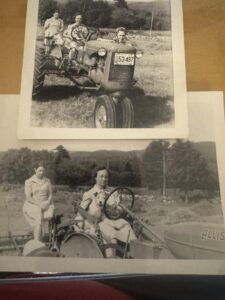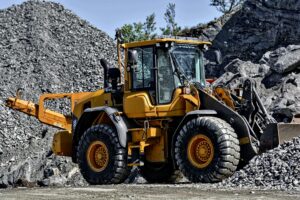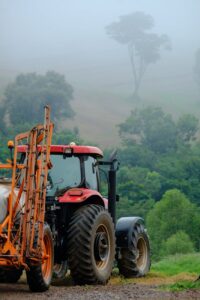The Oliver tractor remains a revered name among vintage agricultural equipment enthusiasts and working farmers alike. With a rich legacy spanning more than a century, the Oliver Corporation was instrumental in shaping the North American tractor industry, particularly during the mid-20th century. Known for their robust engineering, powerful engines, and innovative designs, Oliver tractor models such as the 1950 Oliver tractor, 1650 Oliver tractor, 1955 Oliver tractor, 1850 Oliver tractor, and 1550 Oliver tractor have stood the test of time.
Today, Oliver tractors continue to be used, restored, and celebrated across the United States and beyond. This article explores the company’s history, its most iconic models, how to find Oliver tractor parts, and the importance of resources like the Oliver tractor parts catalog for restoration and maintenance.
The History of the Oliver Tractor
The story of the Oliver tractor begins with the Oliver Chilled Plow Works, founded in 1855 in South Bend, Indiana. The company originally manufactured plows, but by the early 20th century, it transitioned into the broader agricultural machinery sector. The actual production of tractors began in earnest after the formation of the Oliver Farm Equipment Company in 1929—a merger of four companies, including Oliver Chilled Plow Works.
By the 1930s, Oliver was producing its own line of tractors, gaining a reputation for innovation, reliability, and solid engineering. Throughout the 1940s and 1950s, the company introduced several iconic tractor models that remain collector favorites today.
Oliver was acquired by the White Motor Corporation in the 1960s, and by the early 1970s, the Oliver name was eventually phased out, replaced by the White brand. However, the Oliver legacy lives on in the form of thousands of tractors still in operation and a dedicated collector community committed to restoration and preservation.
Overview of Popular Oliver Tractor Models
1. 1950 Oliver Tractor
The 1950 Oliver tractor is one of the most iconic heavy-duty models the company ever produced. Introduced in the early 1960s, it featured a General Motors 4-53 Detroit Diesel engine, which gave it a unique and powerful sound. Farmers appreciated its raw torque and capability, especially for large-scale tillage and planting.
Key features:
-
4-cylinder GM Detroit Diesel engine
-
Around 105 PTO horsepower
-
Rugged design ideal for row crop farming
-
Optional 4WD version available
Collectors and farmers continue to seek the 1950 Oliver model, not only for its historical significance but also for its operational strength in modern farming scenarios.
2. 1650 Oliver Tractor
The 1650 Oliver tractor was part of the “50 Series” lineup and is widely regarded for its versatility. Released in the mid-1960s, this model offered both gas and diesel versions and was suitable for medium-scale farming operations.
Key features:
-
6-cylinder Waukesha engine
-
Approximately 66–70 PTO horsepower
-
Power steering and hydraulics as standard
-
Reliable transmission system with six forward and two reverse gears
The 1650 continues to be a favorite among restorers due to its dependable mechanics and wide availability of Oliver tractor parts.
3. 1955 Oliver Tractor
Following the popularity of the 1950 model, Oliver introduced the 1955 Oliver tractor, which provided improved comfort, styling, and features. Produced in the early 1970s under the White Motor Corporation, the 1955 maintained the Oliver brand’s core engineering while offering modern upgrades.
Key features:
-
310 cubic inch Waukesha diesel engine
-
Over/under hydraulic shift transmission
-
Deluxe operator station
-
Around 108 PTO horsepower
However, some 1955 models were known to experience engine issues, particularly with overheating. As a result, Oliver tractor parts catalog references for this model are frequently used by restorers addressing known weaknesses.
4. 1850 Oliver Tractor
The 1850 Oliver tractor offered a powerful yet efficient performance option for larger farms. It was available in both gas and diesel configurations and stood out for its comfort and innovative features.
Key features:
-
6-cylinder Waukesha engine
-
Approx. 92 PTO horsepower
-
Comfortable cab and operator ergonomics
-
Available with front-wheel assist (FWA)
This model remains in use on many farms and is highly respected among enthusiasts for its balance between power and reliability.
5. 1550 Oliver Tractor
The 1550 Oliver tractor is a smaller model in the 50 series, but still carries the same build quality and engineering excellence. It’s ideal for smaller farms or as a utility tractor on larger operations.
Key features:
-
4-cylinder Waukesha engine
-
About 55–60 PTO horsepower
-
Simple controls and robust frame
-
Widely used for loader work and light tillage
This model’s simplicity and affordability make it a popular entry-level tractor for new collectors or hobby farmers.
Finding Oliver Tractor Parts
One of the key concerns when restoring or maintaining vintage tractors is the availability of parts. Fortunately, Oliver tractor parts are still widely available thanks to a strong aftermarket community, parts dealers, and salvage yards across North America.
Common parts you can still find for Oliver tractors include:
-
Engine rebuild kits (pistons, sleeves, bearings)
-
Hydraulic pumps and control valves
-
Transmission components
-
Carburetors and fuel systems
-
Brake systems
-
Sheet metal, grills, and decals
-
PTO and clutch components
-
Electrical parts (alternators, starters, wiring)
Many parts are available both as OEM (Original Equipment Manufacturer) and aftermarket reproductions. Depending on your restoration goals, you may prefer one over the other. OEM parts are generally considered more authentic, while aftermarket parts can sometimes offer cost savings or improved materials.
The Importance of the Oliver Tractor Parts Catalog
The Oliver tractor parts catalog is an essential resource for anyone looking to restore, maintain, or repair their Oliver machinery. These catalogs are typically organized by model and include:
-
Detailed exploded diagrams of each assembly
-
Part numbers and descriptions
-
Specifications and compatibility notes
-
Cross-references to updated part versions
Whether you’re working on a 1950 Oliver tractor or a 1550 Oliver tractor, having access to the correct parts catalog ensures you buy the right components and understand how to install them correctly. Many parts catalogs are available in digital format, and some vintage tractor websites offer them as free downloads or for buy.
If you’re working on a restoration, pairing the parts catalog with an Oliver tractor service manual is highly recommended.
Where to Buy Oliver Tractor Parts
Several reputable suppliers offer Oliver tractor parts both online and through physical stores:
-
Agkits – Offers engine rebuild kits, gaskets, and performance parts for many models.
-
Steiner Tractor Parts – Specializes in vintage tractor parts and carries a wide selection for Oliver.
-
Korves Oliver – A dedicated Oliver parts supplier based in Illinois, well-known in the collector community.
-
Shoup Manufacturing – Carries high-quality aftermarket agricultural parts.
-
Ebay & Craigslist – Good for finding rare parts or used components at lower prices.
Additionally, farm auctions and salvage yards can be valuable for sourcing hard-to-find items, especially for discontinued or limited-production models.
Tips for Restoring an Oliver Tractor
Restoring an Oliver tractor is a rewarding but detailed process. Here are some tips to ensure success:
-
Start with a parts catalog: The Oliver tractor parts catalog will serve as your restoration roadmap.
-
Join a community: Online forums like Yesterday’s Tractors and OliverTractor.com offer invaluable advice.
-
Document everything: Take photos and label parts during disassembly to make reassembly easier.
-
Use quality parts: Invest in OEM or high-grade aftermarket parts to ensure durability.
-
Check serial numbers: Verify the exact model and production year to ensure parts compatibility.
Oliver Tractors in Modern Farming
While newer machines offer more electronics and automation, many Oliver tractors remain in use today, particularly in smaller farming operations. Their mechanical simplicity, ease of repair, and sturdy construction make them suitable for:
-
Haying and mowing
-
Loader work
-
Light tillage and planting
-
Utility tasks around the farm
Additionally, because of their historical value and aesthetics, Oliver tractors are often displayed at tractor shows, used in parades, and maintained as heirlooms.
Preserving the Oliver Legacy
The Oliver tractor represents a golden era in American manufacturing and agriculture. Thanks to the dedication of collectors, restorers, and part suppliers, this legacy continues today. Whether you’re maintaining a 1650 Oliver tractor for daily fieldwork or restoring a 1955 Oliver tractor for show, the tools and support are available to help you preserve this important piece of agricultural history.
From sourcing genuine Oliver tractor parts to using an Oliver tractor parts catalog for reference, every step taken to preserve these machines contributes to keeping the Oliver legacy alive for future generations.
Conclusion
Oliver tractors are more than just farm equipment—they’re icons of American agricultural engineering. With powerful and dependable models like the 1950, 1650, 1955, 1850, and 1550 Oliver tractors, the brand left a lasting impact on the industry.
For collectors, restorers, and working farmers, the journey of owning an Oliver tractor is filled with pride, nostalgia, and satisfaction. With resources like Oliver tractor parts catalogs, growing parts suppliers, and an active online community, maintaining and restoring these machines has never been more accessible.
Whether you’re in the workshop rebuilding an engine or in the field putting a 50-year-old machine to work, the Oliver name continues to represent quality, durability, and tradition.



